I’m so excited to have my guest blogger this Friday and the next! I know many of you are branching into homesteading, given our precarious economy. Since we’re hoping to get into raising some chickens ourselves, I knew I had to ask my friend “Heather HippyHomesteader” (aka Heather Harris) how to go about it!
You can find Heather at:
Pinterest: http://pinterest.com/homesteadhippy/
Facebook: http://www.facebook.com/pages/The-Homesteading-Hippy/346977892012766
Google+ https://plus.google.com/u/0/118430580883831014579
Twitter: twitter.com/homesteadhippy
Let’s get started! Here’s Heather!
laying? I know that sounds terrible to think of the end of
<img
<a
white
leghorns. </a
</img
</a
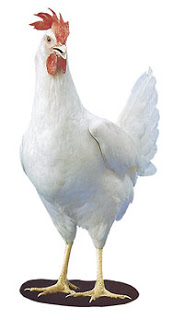 |
| White Leghorn |
<img
<a
They are egg laying machines! Not the most personable
birds in our yard, though. If you want a nice roasted bird after
their laying life is over (usually 4-5 years) then a dual purpose bird
is a good choice. Our <a
Rhode Island Reds have been a good choice for that.</a
</a
</img
</a
 |
| Rhode Island Reds |
<img
<a
<a
They are friendly, and easy to bond with as well. My seven-year old can </a
</a
</img
</a
<a
<img
<a
<a
easily pick them up and “pet” them, and they don’t seem to mind (or they </a
</a
</img
</a
<a
<img
<a
<a
have given up on trying to get away from him…). Some other good breeds </a
</a
</img
</a
<a
<img
<a
<a
of chickens that fall into dual purpose include: Black Australorps; Lt. Brahmas;
Dark Cornish; Black and White Giants; Buff and White Orpingtons; New
Hampshire, Rhode Island Reds, Barred, White, Partridge, Buff
Rocks;Delaware, Sussex, Turkens; White, Silver Laced, & Columbian
Wyandottes, Red Star and Black Star. </a
</a
</img
</a
<img
<a
<a
And, of course, if you want a fast-growing bird that you can get a
5-10 pound dinner from, then I suggest you look into a<a
<img
Cornish cross. </img
</a
</a
</a
</img
</a
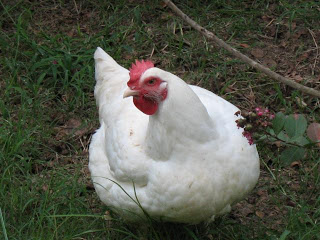 |
| Cornish cross |
<img
<a
<a
<a
<img
They take approximately 8-10 weeks to get to “market weight,” will eat
you out of house and home if given the chance, and will be very tasty when
you are done.</img
</a
</a
</a
</img
</a
<img
<a
<a
<a
<img
And, finally, if you just want some attractiveness and fun to add to
your yard, ornamental chickens are great for that! Most are “bantam”
sized, which basically means they are 1/2 the size of other chickens
and their eggs are 1/2 the size. If you don’t mind using 2 banty eggs
for each regular egg in a recipe, bantam chickens are great! Our
family favorites included: <a
</a
</img
</a
</a
</a
</img
</a
Silkies and Polish Hens. <a
<img
</img
</a
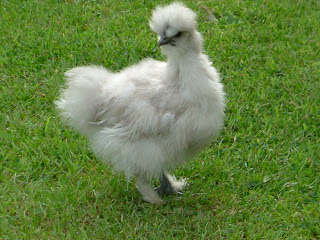 |
| Silkie |
 |
| Polish Hen |
<img
They were fun to watch, and have a unique personality all their own. Of course, you
can eat these birds when the time comes, but the amount of meat you
will get is going to be very small. Think “chicken soup” or “chicken
and noodles” type of dinner.
Once you decide what type of birds you want to get, then you have the
all-important question of:
Where are they going to live? Chickens need very
little in the way of furniture, kitchens, or bathrooms, really. A nice
two-story stucco with an open dining area would suit them just fine.
JUST KIDDING! They really only need a few things: a place to get out
of the weather, a place for dust baths, a place to lay their eggs, and
a safe place to roost away from predators. All this can be achieved
very easily and quite cheaply, if you want. You will want to decide
if you will keep them in one place<a
(coop) or if you want to move them around the yard<a
(tractor). </a
</a
</img
</a
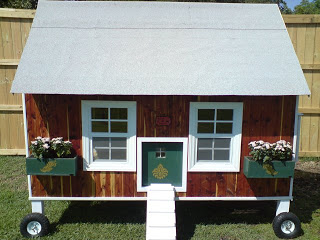 |
| Coop |
<img
<a
<a
Since we have used both, I’ll give you what I think
are advantages and disadvantages of each.</a
</a
</img
</a
<img
<a
<a
With the tractors, you have to move the birds on a regular basis.
Chickens can easily destroy an area of vegetation with little effort.
And, since they still will take their<a
dust baths (http://en.wikipedia.org/wiki/Dust_bath), they will dig holes in their area to dust themselves off with. You may end
up with tons of “ankle breakers” all over your yard if you don’t
quickly fill the holes in. The advantages of this type of home is
that as you move the birds, you will have your lawn automatically
fertilized and mowed for you. You can move the tractor to wherever
you want the birds to chow on the grass. Cleaning the roosting area
can be much easier, and much simpler. The drawbacks are: you have to
move them around daily, or you risk having bare patches in your yard
when the chickens dig up all the grass. If you are where you get a
lot of snow in the winter, digging out your tractor on a regular basis
can be quite the hassle. If you don’t move it, you will get lots of
muddy manure, and your chickens can get <a
“bumble foot” (http://en.wikipedia.org/wiki/Bumblefoot_%28infection%29).</a
</a
</a
</a
</img
</a
<img
<a
<a
<a
<a
Then, you have the permanent coop. We converted an old metal shed
into ours. Simple enough. But, the drawbacks are: where the “runs”
for the chickens are will most likely never see grass again, the
manure builds up a lot (maybe because we don’t notice it until it’s
almost as tall as me) and takes more effort to clean up. However, not
having to move them around daily is definitely a plus. Their food and
water is in the same place all the time and they have become nearly
effortless in raising.</a
</a
</a
</a
</img
</a
<img
<a
<a
<a
<a
Speaking of runs, you will also need to decide if your birds will free
range during the day or be penned up. Free ranging basically means
they get to go where they want to, finding all sorts of yummy bugs,
worms and seeds all over the place. You’ll just want to make sure
they stay out of trouble, your garden, and your neighbor’s flowers. Some
people find that their free range birds lay their eggs all over the
place, but ours have been “trained” to lay in the nesting boxes in the
coop. What we did was keep them penned up until they got used to it,
and free ranging for them isn’t a problem. They go back to the
nesting boxes daily, deposit their eggs, and it’s back outside for
them. They have the whole yard (minus the garden area) to find
delectables, and they don’t take out the grass as quickly. Of course,
we had to fence in our yard completely, and there is a series of fences
inside our yard to keep them away from the garden and out of certain
places.</a
</a
</a
</a
</img
</a
<img
<a
<a
<a
<a
You can also make runs or pens for your chickens. PVC pipe and a bit
of chicken wire are great for this! Then, you can add space to where
your chickens can roam, all the while keeping them where you want them
only. The only drawback to this idea is if you run out of penning
room, they will destroy the grass quickly and only have bare dirt to
scratch at. Still better than being locked up inside all the time.
Runs can also be added to tractors to expand the roaming area for your
birds, and PVC pipe is easily moved around. We did this for a while,
and use the PVC pipe pens still for our meat birds each year.</a
</a
</a
</a
</img
</a
<img
<a
<a
<a
<a
(Most chicken photos taken from the http://www.mcmurrayhatchery.com website.)</a
</a
</a
</a
</img
</a
<img
<a
<a
<a
<a
****Thanks so much for the info, Heather! Looking forward to next week, when you blog about feed for your chickens. How about you, readers? I know some of you have chickens–please share any helpful tips you’ve learned along the way for newbies like me! Or feel free to ask Heather some questions below!**** </a
</a
</a
</a
</img
</a

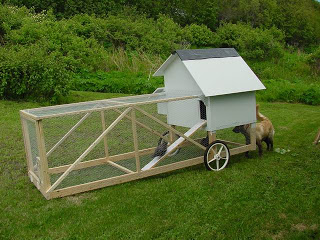
Great post! I'm afraid we're softies – we just can't bring ourselves to eat our old hens! 🙂 (though we do raise meat chickens) That is one adorable coop pictured too!
I hear ya on that!! I am sooo not looking forward to having to butcher some of the girls. Well, SOME…others get into so much trouble so often, it wont' be hard 🙂
Love the pics, I had no idea there were so many different types of chickens! You educated me far more than all my years growing up around farms did- thanks!
Heather,We have laying hens – once we've babied them for years of laying, we're like Jan and can't bring ourselves to eat them. They all get named… and once named, they're practically people. Besides, I've heard that the old ones are tough so it becomes my excuse to not eat them. Anyway, we LOVE our hens – have had them for almost five years. Of all the "farm animals" we have, they are definitely the most productive and cost-effective contributors to our table AND garden (poop for the compost).Great post – but then, I'm partial.BeckyGreat post –
Thanks for commenting, Becky–yup, once anything has a name, it's permanent with kids! Grin. Glad to hear chickens are a worthwhile endeavour!
Simply just want to mention Now i am happy I stumbled in your webpage!